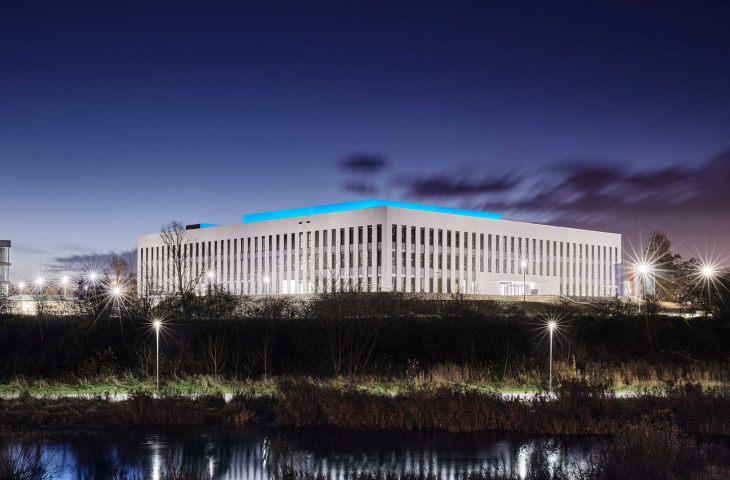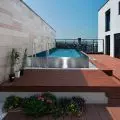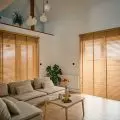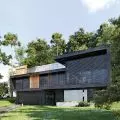The topic of environmental protection in architecture is not only resounding more and more strongly. We are all observing and experiencing climate change at a fast-growing pace. Sustainable design is therefore becoming a leading thread in industry discussions.
Designing in the ecological trend is not only using raw materials that have a positive impact on the environment and saving natural resources. It is also a comprehensive approach to the implementation of energy-efficient solutions based on the latest technology. It is no longer just about the balance between design and functionality, but first and foremost about the impact of the proposed concepts and solutions on the environment.
Great potential lies in a modern approach to lighting
When we talk about the need to reduceCO2 emissions into the atmosphere, the potential inherent in a modern approach to lighting design is imposed. One quick and effective way here could be the widespread use of the most energy-efficient products based on LED technology, as well as the implementation of intelligent management systems.
According to the observations of Lena Lighting - a leading Polish manufacturer of lamps and lighting systems, specializing in energy-efficient solutions, it is still quite common to see an approach that boils down to the installation of lamps that are only equipped with energy-saving or led bulbs, while much more energy savings are brought by the use of lighting manufactured based on LED modules. Even at this level, the differences regarding environmental impact can be large.
It is worth noting that the choice of products manufactured with innovative LED technology using the latest generation of modules is huge. Here Lena Lighting offers products for both industrial, office and service projects. The manufacturer also has a wide range of road, hospital and specialized lighting. The most efficient and energy-saving lamps and systems can thus accompany us in every area of life.
Selecting lighting according to the criterion of energy efficiency should become even more popular. It is worth betting on luminaires that are equipped with modern LED modules and motion or light detection sensors. Also important is the compatibility of lamps with lighting management systems such as ClueIn from Lena Lighting.
Changing the approach to the topic of lighting design seems to be necessary and a challenge for architects, lighting designers and investors - here we are also talking about cities and municipalities, where the process of replacing old lighting with energy-efficient LED fixtures still seems to be too slow.
Energy-efficient interior lighting
The balance between aesthetics and functionality, as well as thoughtful use of space, is fundamental. But the question is how do the proposed solutions affect the environment, and are the recommended products sure to improve overall well-being?
Modern lighting is a combination of the most energy-efficient technological solutions with good, thoughtful design and high quality light. Instead of incandescent bulbs, long-life LED modules, and smart solutions such as motion sensors or the ability to adjust the light output in the fixtures themselves. On top of that, adapting the lamps to lighting management and control systems, including via apps.
Providing a positive experience from interacting with good design should also be combined with the comfort of being in artificial light. An important issue is the design of lighting according to the concept of "Human Centric Lighting," which puts people and their needs at the center. It is extremely important to adapt lighting to the natural biorhythm of humans. Good lighting has a great impact on our well-being, efficiency during work, but also safety. In addition, it must also be friendly to our eyes.
Adjusting the amount of artificial lighting to the amount of natural light should become the standard. "Daylight harvesting" is an important element of sustainable architecture. It affects not only electricity savings, but adjusts our biological clock and related functions such as alertness or hormone levels, among others. It's a whole spectrum of issues related to overall human well-being.
Combining design with energy-saving technology
There are very good solutions and products available on the market, including from Polish manufacturers. An example is, for example, lamps from the BARIS LED collection from Lena Lighting. Intelligent, super-energy-efficient lamps with a minimalist design that allows you to create multi-meter-long, phenomenal lighting arrangements without joining the profile and shade, while providing maximum comfort of use. The glare effect, for example, is minimized here, and the light has an optimal color temperature. Thanks to the built-in motion and presence detection sensor, the BARIS LED lamp turns off when no one is around, and thanks to the light detection sensor, the lamp will automatically increase or decrease the light level depending on the level of natural light. It is compatible with lighting management systems (DALI, or the modern ClueIn from Lena Lighting). It is a combination of advanced technologies in the field of energy efficiency, with design and quality , and the ability to create beautiful, individual installations.
BARIS 52 LED - an intelligent, energy-efficient lamp that provides the possibility of obtaining phenomenal light arrangements
© Lena Lighting
BARIS 52 LED - an intelligent, energy-saving lamp that provides the possibility of obtaining phenomenal light arrangements in office and representative rooms. Equipped with a unique mounting system, it allows you to create as much as 6-meter long light lines without joining the profile and the lampshade, and to compose virtually unlimited sequences and simple shapes and figures. Minimalist design and unique construction have been combined here with energy-saving innovations and solutions to increase the comfort of working and staying in artificial light.
Lighting manufacturers dress their most energy-efficient solutions in very good design, creating products that bring great aesthetic value in addition to much lower electricity consumption. Such lamps, designed for representative, stylish interiors thanks to the use of LED modules, provide beautiful, comfortable lighting.
Solanto lamp
© Lena Lighting
Equipped with the latest generation of LED modules, the SOLANTO lamp is a combination of energy efficiency and design. The simple, geometric form gives it a minimalist character. The milky lampshade emphasizes decorativeness and emanates atmospheric light. SOLANTO's design allows you to adjust the length of the pendant, which, combined with different sizes of circles, gives room to create a variety of spatial arrangements.
We are seeing increased interest in solutions that generate electricity savings. Designers' assumptions in this regard are sometimes impressive, and energy-saving LED luminaires and complex lighting systems based on LED technology are becoming increasingly popular. This is a good trend, but more determination is needed here. Fortunately, there are also extremely ambitious concepts - this was the case, for example, in the realization of lighting for the Poznan University of Technology, where, according to the design assumption, the external lighting of the Faculty of Architecture building could not exceed 1 kW of power, and this was achieved. Obtaining such low power consumption was possible thanks to the use of efficient luminaires of optimal design, equipped with high-efficiency LEDs and very efficient drivers. This was not only a challenge for us as a manufacturer, but, above all, the determination of such low power consumption at the design stage and the entire energy-efficient vision and design of the building deserve recognition," says Marzena Lesinska - Marketing Board Representative of Lena Lighting, a manufacturer of comprehensive, energy-efficient lighting systems. We are seeing an energy-efficient approach more and more often - also in the implementation of service, commercial or industrial buildings. Arguably, this is fostered by the vision of lower expenses for electricity. However, we can see that climate awareness and thinking about the impact of investments on the environment is also increasing. This is a positive and necessary trend," adds Marzena Lesinskaya.
For more information, visit the company's Lena Lighting S.A. page on the A&B portal.
























